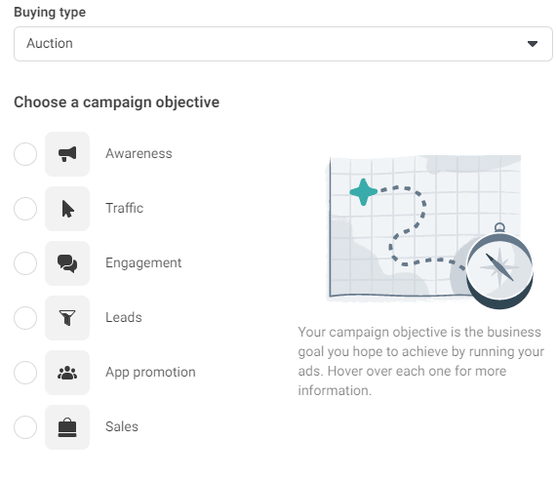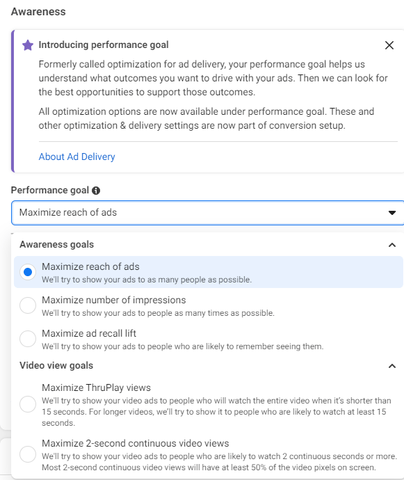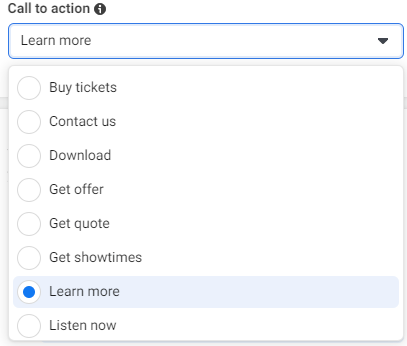6 Effective Tips to Boost Facebook & Instagram Ads CTR

Every industry has the fundamental marketing objective of attracting more users and driving higher conversion rates. But to achieve that, you need to start at the beginning—with a click.
As the costs of Facebook advertising continue to rise, ensuring your ads generate an optimal volume of clicks is one of the most critical elements to focus on. In this context, Click-through-Rate (CTR) becomes one of the most significant metrics to track and improve.
The higher the CTR, the better engagement with your audience and the better return on investment (ROI) you’ll get. In this article, we’ll cover six actionable tips to maximize your CTR and achieve your social media marketing goals. Let’s get started.
What is CTR (Click-Through-Rate)
CTR is the percentage of people who click on a link or ad after being exposed to it. It is calculated by dividing the number of clicks on an ad by the number of impressions it generates and then multiplying the result by 100 to get the final percentage.
For example, if your ad has generated 30 clicks from 1000 impressions, your CTR would be 3%.
Why CTR Matters
Upper-funnel metrics like impressions and reach can indicate how much buzz you managed to generate with the ads. However, CTR is a more qualitative, lower-funnel metric that helps you understand how many users are interested in your product and may have the intention to make a purchase.
A high click-through rate is also a key ranking factor for Facebook’s algorithm, indicating user interest in the ad. It encourages the platform to give your ad greater exposure, ultimately enhancing its overall performance.
A high CTR indicates that the ad is resonating with your target audience. On the contrary, a low CTR may imply that:
- The ad does not resonate with your target audience and needs to be improved or altered
- Your messaging and ad copy are preventing you from effectively reaching your audience. Perhaps the language doesn’t align with their needs, or the copy doesn’t resonate with their desires.
- The audience selection missed the mark: the assumption that your business’s product would captivate a particular demographic turned out to be inaccurate.
Measuring click-through rates can help you improve your creatives and messaging or rethink who you’re targeting with your ads.
Looking to Get the Most Out of Your Ad Spend?
Our team of media experts is always available!
Facebook vs. Instagram CTR
There is a significant disparity in the information provided by various sources regarding CTR on Facebook and Instagram. Generally, Facebook and Instagram cater to distinct audiences.
When it comes to CTR, Facebook users are more inclined to click on ads, whereas Instagram users prefer consuming content within the app and are less likely to click on external links.
However, this should not be a reason to dismiss Instagram as an advertising platform.
By selecting the right audience and crafting ads that resonate with your target audience, it is possible to achieve a higher CTR on Instagram compared to Facebook. Additionally, CTR can vary based on factors such as the industry of the product and type of placement (feed, story, reel, etc.).

How to Measure CTR on Facebook and Instagram Ads
As discussed, CTR is calculated by dividing the number of clicks on an ad by the number of impressions it generates. Now, let’s have a look at the types of clicks we can measure via Facebook ad manager.
- Clicks: the number of clicks on an ad. That includes clicks on a business profile page, outbound links, post reactions, comments, shares, clicking on “expand media,” and more.
- Link clicks: Meta defines these as “the number of clicks on links to selected destinations or experiences, on or off Meta technologies.” This means that a “link click” refers to a click that has been made on a specifically designed link inserted within an ad.
- Landing page views: This metric reveals the number of link clicks generated by an ad, as well as the subsequent visits to the destination landing page. You can compare landing page views to link clicks to gauge the number of users who clicked on your ad but left before your website finished loading.
To summarize, in order to comprehend users’ interest in your product or a purchase, we rely on the link click metric in the CTR calculation, as it demonstrates their intention to learn about your product or service.
However, we would also recommend taking a closer look at landing page views. A significant discrepancy between the number of link clicks and landing page views may indicate potential issues with website loading on desktop or mobile devices.
Top Tips to Boost Your CTR on Facebook and Instagram
Tip #1: Understand Your Objective
Within Facebook Ads Manager, you have the flexibility to select from a range of objectives and optimization goals for your ad campaign.
Campaign Objectives Include:
- Awareness
- Traffic
- Engagement
- Leads
- App Promotion
- Sales

- Under each campaign objective, you can find a list of performance goals.
The performance goal of your ad may vary from your campaign objective. For instance, you might select awareness as your campaign objective and optimize for reach to maximize your ad’s exposure to a wide audience. Keep in mind that each campaign objective has distinct performance goals. Therefore, it’s crucial to carefully choose the objective that aligns best with your goals, budget, and KPIs.

Let’s break down each campaign objective to find the best fit for your specific goals:
- The Awareness objective is highly effective for reaching more users within the audience settings and helping them remember the ad.
- The Traffic objective would be the best if your main goal is to make people click on an ad. If your goal is to achieve the highest possible CTR, this is the objective to choose. However, bear in mind that Facebook algorithms will focus only on people who are more likely to click, meaning that your ad reach will be limited with this objective.
- The Engagement objective helps with reaching users who are more likely to interact with your ad, such as liking it, sharing it, and commenting on it.
- The Leads objective will ensure that your ad is exposed to users who are more inclined to provide their contact information.
- The App Promotion objective is the perfect choice for marketers looking to promote an app. By selecting this objective, you can effectively target mobile users and encourage them to install your app or take other desired actions.
- The Sales objective ensures that your ad effectively targets users with a higher propensity to engage and make purchases, thereby increasing the likelihood of driving product or service conversions.
As previously mentioned, using the Traffic objective is highly recommended for increasing click-through rates (CTR). However, you may wonder if maximizing reach within the defined targeting means sacrificing a high CTR. The answer is no!
With a comprehensive strategy for your ad creatives, it is always possible to enhance the CTR. Even when using the Traffic objective, the effectiveness of generating clicks can heavily depend on generating captivating creatives and copy that entice users to engage with the ad.
Want to Find the Best Campaign Objective for Your Brand and Goals?
Our team of media experts is always available!
Tip #2: Opt for the Best Ad Placement
Remember: Facebook ads generally achieve a much higher click-through rate (CTR) compared to Instagram ads. However, we don’t expect you to just take our word for it. This conclusion stems from a comprehensive analysis of our clients’ average CTR, allowing us to pinpoint specific ad placements that have exceeded the average rate.

Based on the data above, we can conclude that:
- The Audience Network’s CTR is slightly higher than the one on Facebook.
- The most effective placements on Facebook are Facebook Stories, Facebook Feed, Instream video, and Video Feeds.
- All Instagram placements turned out to have a lower-than-average performance.
Overall, we recommend choosing a placement where the CTA button or text will be displayed vividly, such as in the Feeds, Instagram Explore, Stories and Reels, Facebook in-stream videos, and Instagram search results.
Tip #3: Revamp Your Creatives
By optimizing ad creatives, you can enhance the effectiveness of your ads strategy.
The most commonly used ad creatives on Facebook & Instagram include images, videos, GIFs, and carousels (multiple images or videos in one swipeable ad).
However, there has recently been a significant decrease in the click-through rate (CTR) for carousel ads, despite their previous success in 2022. On the other hand, GIF ads are experiencing an increase in CTR.
- It’s also important to note that video ads can sometimes divert users’ attention away from clicking on a link, especially when the video lacks clear CTR prompts at the beginning and end.
Best Practices for Optimizing Ad Creatives
- Opt for eye-catching and standout designs that will differentiate your ad from other posts.
- Utilize user-generated content (UGC) style creatives, including engaging UGC videos and GIFs, which have proven to generate significantly better performance than others.
- When using image-based creatives such as GIFs or carousel ads with images, keep in mind that maintaining less than 20% text in the creatives is recommended for better results.
- Always pay close attention to creative specifications, especially for Stories and Reels placements, as certain elements in these placements may overlap with text or important images. It is crucial to adhere to Facebook’s creative specs to avoid any unintentional cropping.
Tip #4: Keep the Ad Copy Short and Sweet
When crafting ad copy, it is crucial to prioritize brevity and clarity. Avoid using multiple Call-to-Actions (CTA) or ambiguous messaging, as this can distract users and hinder ad performance.
- Instead, consider incorporating numbers, questions, and emojis (if relevant) to make the copy more appealing and engaging to users. Avoid including multiple links leading to different destinations, which might confuse your audience.
Remember – users tend to be more inclined to react and engage with posts that relate to current events happening in their local area.
Tip #5: Consider Different CTAs (Call-to-Actions)
Your CTA (call-to-action) can be placed in the ad’s copy, as a button at the bottom of an ad, or in the ad’s creative:

Choosing the optimal placement for your ad’s call-to-action (CTA) is vital for the success of your campaign.
To assist you in making this decision, here are some tips to consider:
- To optimize CTR, it is recommended to utilize a CTA button, as users are more inclined to click on a button compared to other forms of CTA placements.
- If CTR is not your primary goal and you don’t want to distract users from other activities like watching a video or engaging with the ad, consider placing the CTA as a link at the beginning of your ad’s copy. This increases the chances of users clicking the link. However, we don’t recommend using elements with different objectives in one ad, as users typically perform only one interaction with an ad. If they click on a link, they are less likely to watch a video or engage with it.
- If you’re opting to use a CTA button, choose a clear and suitable option to fit the campaign’s objective. For example, “Learn more” can be perceived as vague, while “Shop now” or “Play game” precisely indicates what users get by clicking the button.

Tip #6: A/B test
A/B testing is an indispensable strategy for improving your ad campaigns’ click-through rate (CTR) on any social media platform. Implementing this approach can significantly boost your ad performance and drive better results.
Here are some key steps to effectively conduct A/B tests:
1. Create Multiple Ads: It’s crucial to experiment with different ad copies and creatives to gauge what resonates best with your target audience. To start, develop 2-3 ads utilizing the same creative but with distinct copy variations.
2. Explore Diverse Creatives: Alongside varying your ad copy, you should also test different creatives within your ads. Develop 2-3 ads that share the same copy but utilize visually distinct creatives.
3. Monitor Performance: Continuously track and analyze the performance of your ads. Identify the best-performing ads based on engagement metrics, such as CTR and conversion rates.
4. Optimize Your Campaign: Once you have gathered sufficient data, pause the underperforming ads and allocate more budget and resources to scale up the top-performing ones. This optimization process ensures that you’re utilizing your ad spend effectively and maximizing your chances of success.
Implementing A/B testing as part of your Facebook and Instagram ad strategy allows you to fine-tune your campaigns, improve ad relevance, and ultimately drive higher click-through rates.
By understanding your audience’s preferences and optimizing your ad content and visuals, you can achieve better campaign results and make the most out of your advertising budget.
Key Takeaways
All conversions start with a simple click, which is why CTR is one of the most significant metrics for tracking and optimizing your Facebook and Instagram ad campaigns.
To maximize the effectiveness of your campaigns and achieve an improved CTR, it’s crucial to consider several key factors. Begin by selecting the most appropriate promotion objective that aligns with your goals. Next, take into account your target audience, ad placement, creatives, and copywriting. Finally, experiment with A/B testing to see which campaigns resonate the most. By following these tips, you’ll be on your way to enhancing your campaigns’ CTR in no time.
To further amplify the impact of your ad spend and ensure you’re reaching the right customers at the right time, consider partnering with a media buying agency like Moburst. Our digital marketing services and strategic guidance can help you maximize the return on your investment.
Remember, optimizing your ad campaigns for a higher CTR is not just about boosting clicks but also driving valuable conversions to achieve your desired goals.
Ready to Experience Hypergrowth?
Our team of experts is here to help!
FAQs (Frequently Asked Questions)
CTR (click-through rate) is a significant metric for tracking and optimizing ad campaigns. Higher CTR indicates better ad relevance and increased chances of conversions. It is crucial to maximize CTR to improve campaign effectiveness.
A/B testing is an essential strategy for improving click-through rates (CTR) in ad campaigns on social media platforms. By testing different ad copies and creatives, you can identify what resonates best with your target audience, leading to better ad performance and results.






